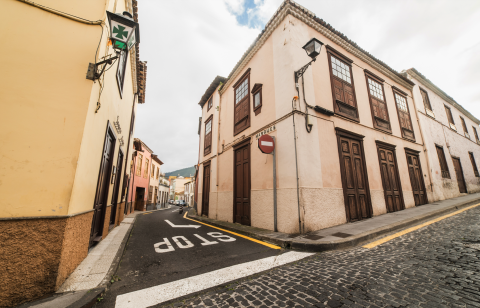
La Villa de Arriba (the upper town), also known as the Farrobo neighbourhood, was the place where the humblest families of La Orotava originally settled. Centuries-old houses are mixed with new buildings here. Walk down this street to the first street on the left, Calle Limonero. You’ll find small details and places that will help you picture what this area used to look like: irregular lime and stone walls; rooftops with several pitched surfaces; doors and windows that reveal the fine and detailed carpentry work of the artisans who lived here. In some of the lower buildings, you’ll see the traditional tile work often populated by verode plants, which barely need any soil to thrive.
Large families used to live here until the mid-20th century. The façades are closed and have small windows because the way in to the houses would be via the backyard, where family life took place. Small vegetable patches were cultivated for each family’s own use and animals such as chickens and rabbits were kept for food. Since the 1950s, families have been building over these yards to extend the space of their homes.
It’s worth exploring these streets to discover the small clues that will whisk you back to another time. In the upper town, you can sense the bustle inside the humble homes and the daily lives of the people who made life possible through their work away from the elegant houses and churches of the old town. Carpenters, artisans, farmers, servants, winemakers and blacksmiths lived here. People who made their living with their own hands.
Let's start the way back to the starting point by wandering around to enjoy some more places yet to be discovered. The next stop is the San Juan Bautista Church. Go down Calle Limonero to Calle Pescote and turn right. Watch out for cars because they pass by very close to the houses. For safety reasons, some pivots mark the way forward. Continue to the pedestrian crossing, then cross it and go down to Calle San Juan. From the pedestrian crossing you can see the tower of San Juan Church and the palm trees on the square. Let's go there now.





